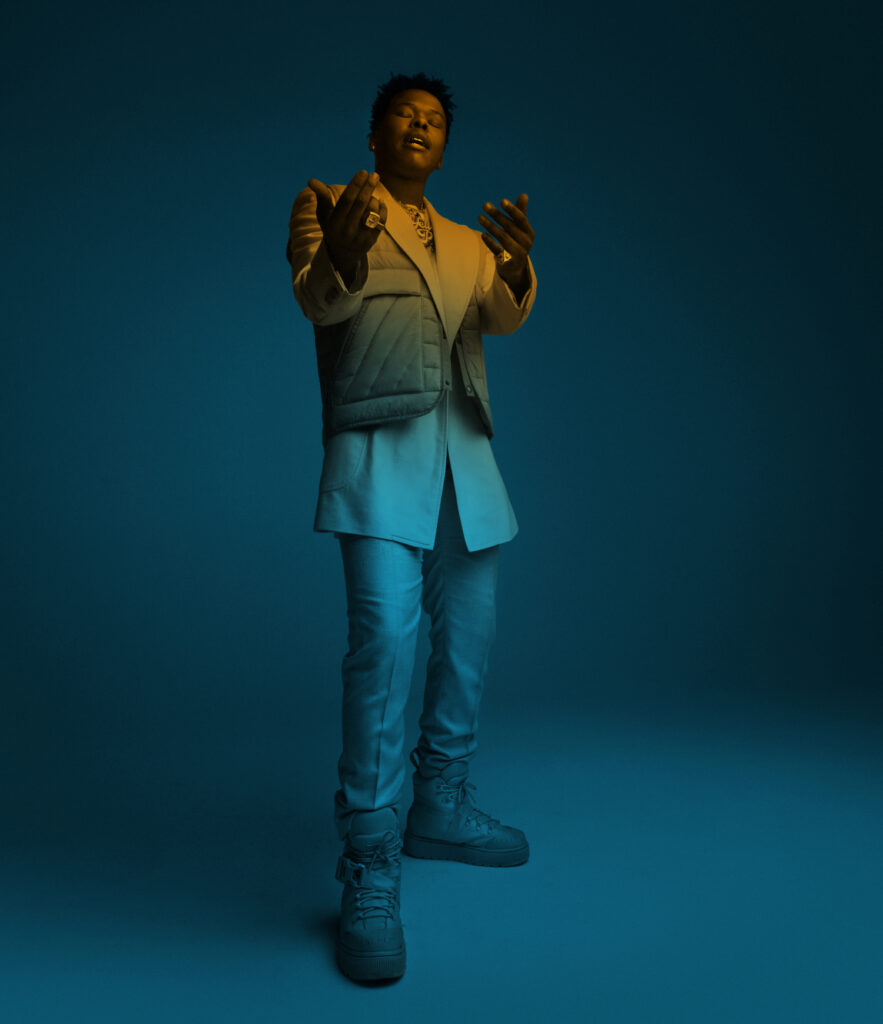One of Fashion stylist Bee Diamondhead's creations.(Photo: Aart Verrips)
The fashion media model is evolving and our grasp of who shapes our desire for a particular brand, aesthetic or even colour has become more nebulous. Instead of depending solely on print media as we would have just decades ago, we glean most of our cultural leanings from social media and digital content from a wide variety of sources, both commercial and individual. In this landscape the role of fashion stylists becomes more important. Every single piece of commercial fashion content, as well as every advertisement and music video, can attribute a large part of its success to the vision and understanding of the stylists involved.
There are countless kinds of stylists — including fashion, interior, and food — and, as a profession, fashion styling has few barriers to entry. Among the thousands of working stylists, there are a handful who have gained multi-industry recognition, influence and the right to say that they are shaping a narrative. One of those fashion stylists is Bee Diamondhead.
 Collage photographed by Tatenda Chidora and composed by Lunga Ntila
Collage photographed by Tatenda Chidora and composed by Lunga Ntila
As one of the most prolific and hardworking stylists in the industry, I can — with a fair degree of certainty — assume that you have seen Bee’s work, though you may not know it. She has styled countless commercials and music videos both in South Africa and elsewhere on the continent. She even styled and featured in photographic artist Kudzanai Chiurai’s 2017 series We Live In Silence. Through her work, she has been instrumental in creating some of South Africa’s most iconic recent pop imagery of the last decade.
For stylists like Bee, the job isn’t about compiling “cool” outfits, but a far more conceptual approach. In the case of commercial jobs, the stylist must understand client needs and interpret their intentions into stylistic symbolism that speaks to the viewer without overshadowing the message. To achieve this, Bee and her team do extensive research, curate mood boards and suggest alternate stylistic choices and perspectives that add subtle layers of meaning. With her personal projects, Bee allows her creative inclinations to lead, partnering with her favourite industry counterparts and creating avant-garde and stylised photographic work. There is still research and conceptual exploration, but with the commercial imperative eliminated, the focus is on creating something striking, memorable and authentic.
 (Photo: Aart Verrips)
(Photo: Aart Verrips)
Once the research is complete, the focus shifts to sourcing the relevant clothes. The success of this part of the job is dependent on a network of well-maintained, professionally symbiotic relationships. For fashion designers, having a person like Bee using your work means exposure, visibility and access to platforms that would otherwise be out of their reach. Choosing to collaborate with a brand has been enough to elevate local fashion brands into industry staples.
The final stage of the process, important though much less exciting or noteworthy, is the returns and recon that closes out the job.
As with many other production fields, the biggest hamstrings to Bee’s abilities are time and budget. Fashion and style as a semiotic device — conveying character, identity and context — have the potential to tell incredibly nuanced stories. If clients and producers consider wardrobe to be a core element of production instead of an afterthought or an add-on, the results have the potential to be groundbreaking.
 (Photo: Aart Verrips)
(Photo: Aart Verrips)
Having reached a point in her career at which she can choose what jobs she takes on, Bee is led not just by economic prospects but also by ethical considerations. As a black woman, she recognises that putting her weight behind issues that matter to her and avoiding spaces and people that do not not value inclusivity is paramount to surviving her gruelling work schedule.
The time, effort, creative insight, collaboration, and human resource management that are involved in Bee’s work mean that, while the central focus of her work is the clothing, her work often extends into production and art direction. Clients that recognise the breadth of knowledge held in Bee’s collective and partners, and who are willing to trust her instincts instead of dictating the vision, will benefit from the full force of her creative and conceptual abilities. — Anita Makgetla